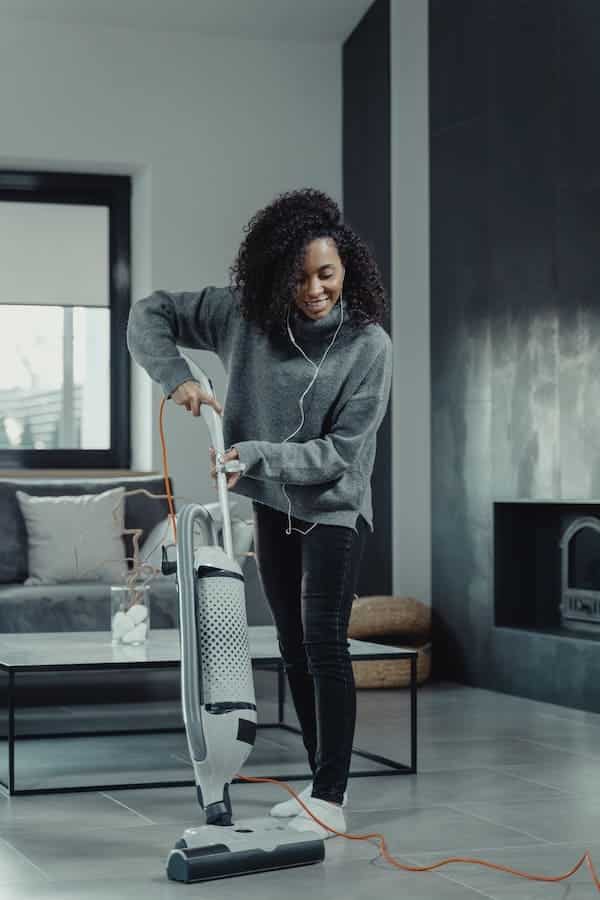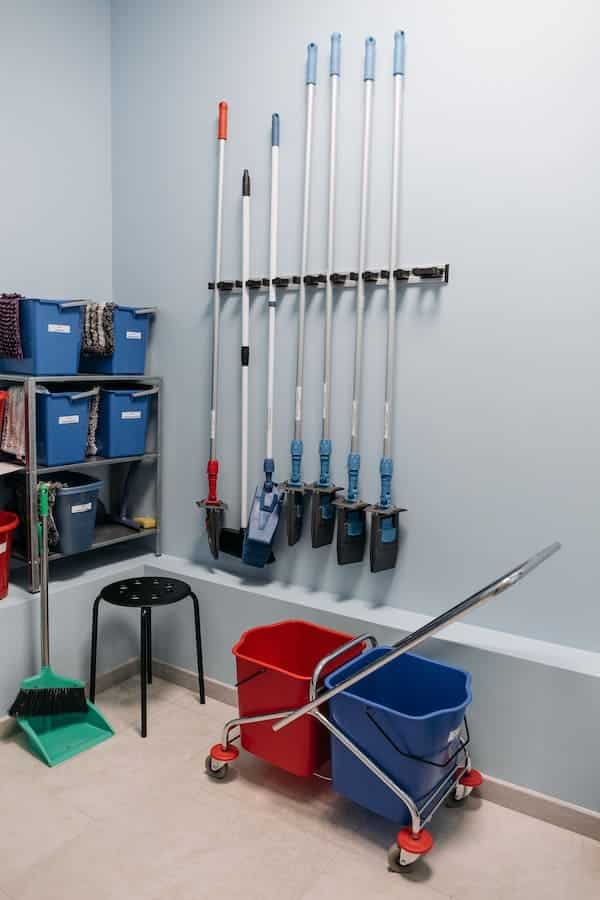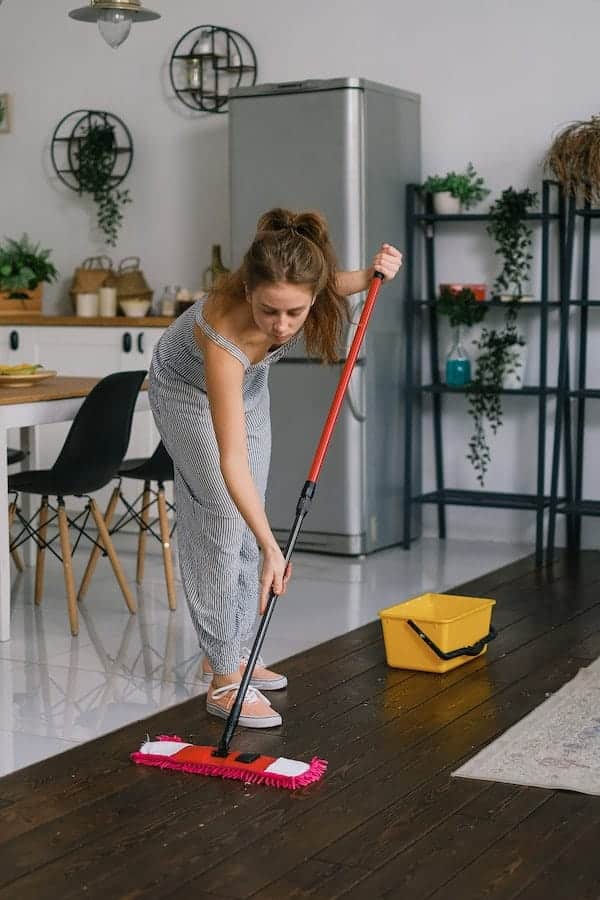A steam mop requires slightly more maintenance than a standard mop, but it is a fair trade-off. This article will note the key benefits of the steam mop before describing the four simple steps to keep it looking and functioning as if it were new forever.
Steam mops are becoming the next essential item in every home. They are an innovative technique to minimize chemical use at home while retaining a typical mop’s necessary material and grime-busting qualities.
A steam mop holds some notable advantages but definitely requires necessary upkeep to ensure it works well for as long as possible.
Therefore, it is critical to comprehensively clean the entire piece of equipment to ensure it looks after you as well as you look after it. This article will explain the key pros and cons of the mop system before presenting the best approach to ensuring the mop is thoroughly cleaned.
There may be affiliate links in this article. You can read more about this in my disclosure.
What Is a Steam Mop?

A steam mop is a relatively new idea that is considered an environmentally friendlier and innovative new method of tackling the pesky task of floor cleaning. It is a prominent move away from the tired, old-fashioned method of scrubbing a floor with a grey, unabsorbent fabric alternative.
Steam mops are essential steam cleaners with a fabric head that steam passes through as a method of displacing dirt and grit by employing the steam as a catalyst instead of chemicals or physical scrubbing.
They are electrically powered devices with a heater and a water tank that pushes steam through a large nozzle at pressure. This creates a hot and moist environment that easily tackles dirt and grime.
The head of the steam mop is usually microfiber, a proven abrasive cleaning tool, while remaining delicate to more fragile surfaces. Essentially, the steam mop is an attempt at improving every aspect of traditional mopping.
[amazon box=”B0028MB3HM,B0091YYUAM,B07WYJTW51″ grid=”3″]What Are the Disadvantages of Using a Steam Mop?
The steam mop appears to be a foolproof, more efficient, improved mopping method. However, it certainly has some drawbacks that should be considered.
Its alternative to chemicals may seem more like a more environmentally friendly option. However, the steam mop relies on a powerful electric heater and steamer to work.
This means that a considerable amount of electrical energy is consumed for the mop to function. Not only is this wasting a resource, but it also means that it is an expensive piece of equipment to own and use regularly.
Additionally, you must now be plugged into an electrical outlet to mop any part of your home. This has created new limitations to mopping rather than innovation.
It is a restriction that will not actually work in every house, depending on space and design.
Steam requires water to be 100 degrees celsius to produce. This means that the steam mop can become dangerously hot, creating a potential hazard.
Moreover, the delicate microfiber cloth will not necessarily be a match for the old-fashion proven method. A heavy, hot, chemically soaked head is sometimes required to remove heavy-duty grime and dirt.
It uses physical abrasion and corrosive chemical properties to eliminate the most robust cleaning issues. Although continual improvements are essential, it does not mean that some of these older methods aren’t already the best we have.
Steam mops are a new and valuable tool in our cleaning arsenal. However, it is clear that there are many advantages to using this innovative method already.
This is significant, considering it is in its first development phase with various advancements.
What Are the Advantages of Using a Steam Mop?

Steam mops are a contemporary floor cleaning method that does not require harsh chemicals to eliminate bacteria. Instead, they utilized the properties of steamed water, which will eliminate bacteria and loosen ingrained dirt and grime.
Steam cleaning also kills mold spores and allergens, eliminating odors rather than just covering them up. It is an underutilized and incredibly powerful cleaning agent with impressive results.
This has significant positive environmental implications. Firstly, this means that the mop does not require any potentially hazardous chemicals to derive the same results.
It is particularly significant for those with pets and small children. Spreading hazardous chemicals across the floor of our home is not so bad for adults, but smaller family members will be in regular contact with whatever you put in your mop bucket.
Moreover, reducing our use of potent chemicals means less is generally produced, and less is being harmfully introduced to our environment.
For example, a mop bucket full of bleach, which was thoroughly used to clean your floor, gets dumped down a toilet or drain. This will inevitably end up in places it shouldn’t, deteriorating an already delicate environment.
Steam is a handy tool when it comes to loosening grime and dirt. Like steeping dishes in a hot sink, the steam can soften and gently agitate a stubborn surface allowing the microfiber head to take up the remaining material easily.
Ultimately every aspect of mopping has been innovated with the steam mop approach. It is likely that it will soon become a product seen in every home, are rightfully so.

How to Clean Your Steam Mop
It is vital that you keep your steam mop clean for it to remain a valuable and potent cleaner. When using a tool in the grimiest and dirtiest areas of your home, it must be clean enough to take on the job first.
The following is a guide to ensure your steam mop is in the best condition possible to take on the grime in your home. Remember, you must take care of it for it to take care of you.
Step 1: Preparation
The steam mop requires very high temperatures to function optimally. Therefore, before any cleaning or maintenance is attempted, you must leave it to cool down.
The operating temperatures are more than high enough to cause a severe burn. This includes all of the functional components of the mop, from the heating element and the water tank to the nozzle and microfiber head.
Each part will be dangerously hot during and after use.
Unplug and leave the steam mop for at least an hour before you begin cleaning it. Be mindful even after this time, and ensure it has cooled to an appropriate temperature.

Step 2: Water Tank
Once the steam mop has cooled completely, it is time to remove and empty the water tank. Most machines will allow you to fully detach the tank, which is more practical for cleaning.
Now it is time to clean the tank itself. This is particularly significant if you use hard water in your mop.
This will create limescale over time and potentially clog and damage the machine.
Use a sponge, warm water, and, more importantly, some neutral ph soap. Remember, whatever goes into the tank will go through the entire mop system, so be mindful about what chemicals you use.
This is an excellent routine to follow after using the steam mop. However, if water is allowed to sit in the tank and system for an extended period, it can encourage mold growth.
In addition, it will make the machine harder to clean and potentially clog and damage it.
[amazon box=”B07RRT2FZ5″ template=”vertical”]Step 3: Microfiber Head
The head of the steam mop will be the most filthy as it comes into contact with the grime and dirt on the floor. These microfiber heads are designed to be removed and cleaned easily, which should be done regularly.
Most manufacturers will provide you with the optimum cleaning procedures and wash cycles that will work best. However, it is never a bad idea to soak the heads before cleaning.
In addition, it would be recommended to guarantee they are thoroughly washed after cleaning any particularly nasty debris.
Be vigilant about what chemical agents you use to clean the mop heads. These will come into direct contact with your flooring.
Avoid heavy chemical agents like bleach and more generic substances like vinegar. Again, it is not necessarily what the chemicals are but what effect they can have on your floors that should be considered.
[amazon box=”B07L3J129J,B07W5R7HG3,B07MTG9FZW” grid=”3″]Step 4: Final Touches
Your steam mop will be a well-used device that will encounter the most disgusting, filthy areas of your home. Therefore, it would be beneficial to give the complete equipment a comprehensive cleaning too.
A warm damp cloth and some neutral PH soap would be more than adequate. Make sure you cover all the mops from the handle down to the nozzle.
This will ensure longevity and well functioning device for as long as you own it.
Conclusion
Even with the discussed drawbacks, it is clear that a steam mop offers some substantial advantages to a typical old-fashioned model.
This article has clearly explained the main pros and cons of this innovative new cleaning tool.
Moreover, the simple 4-step guide to cleaning the device is the best form of maintenance you can do at home to make sure your steam mop will last for as long as possible.



